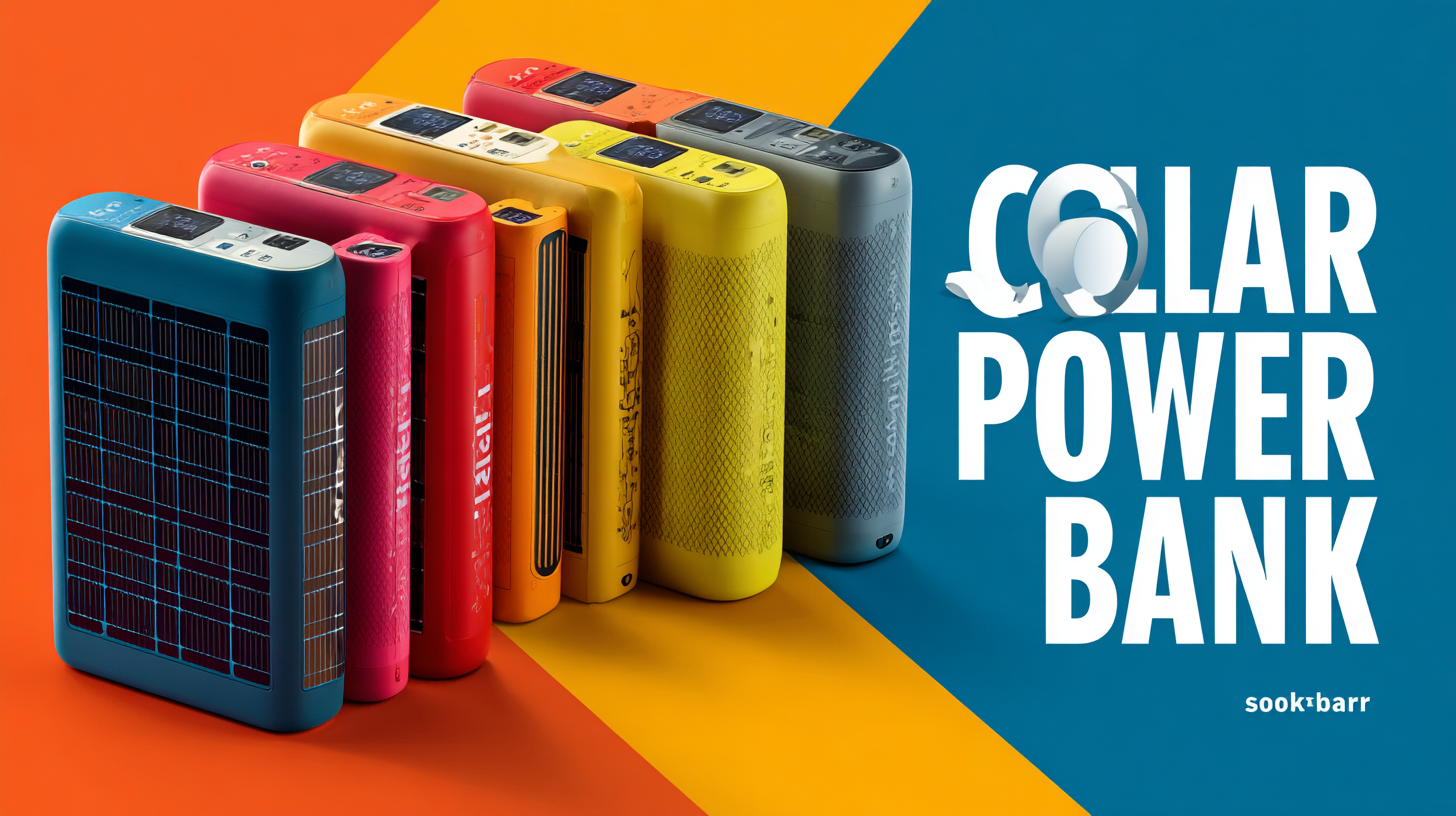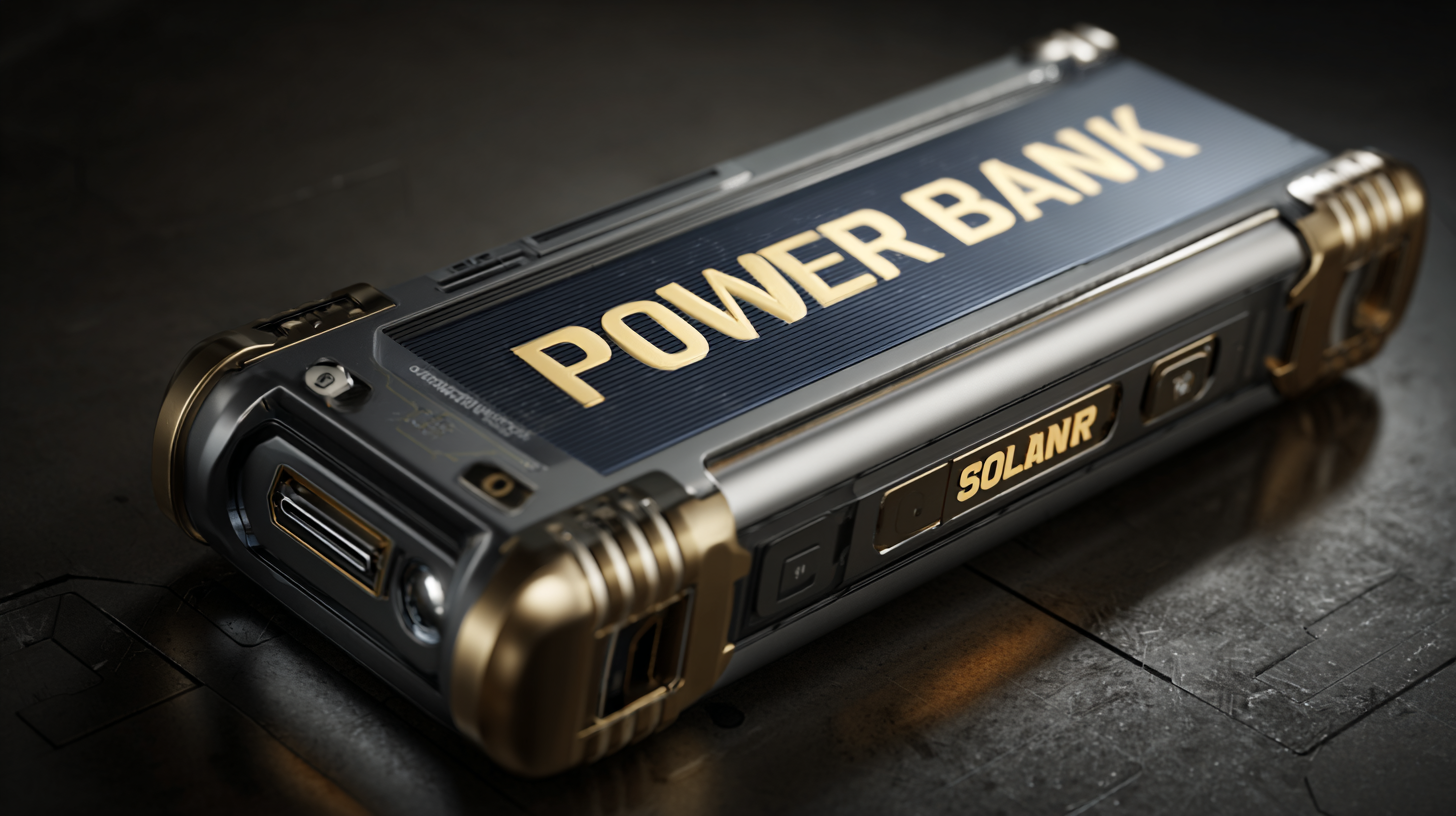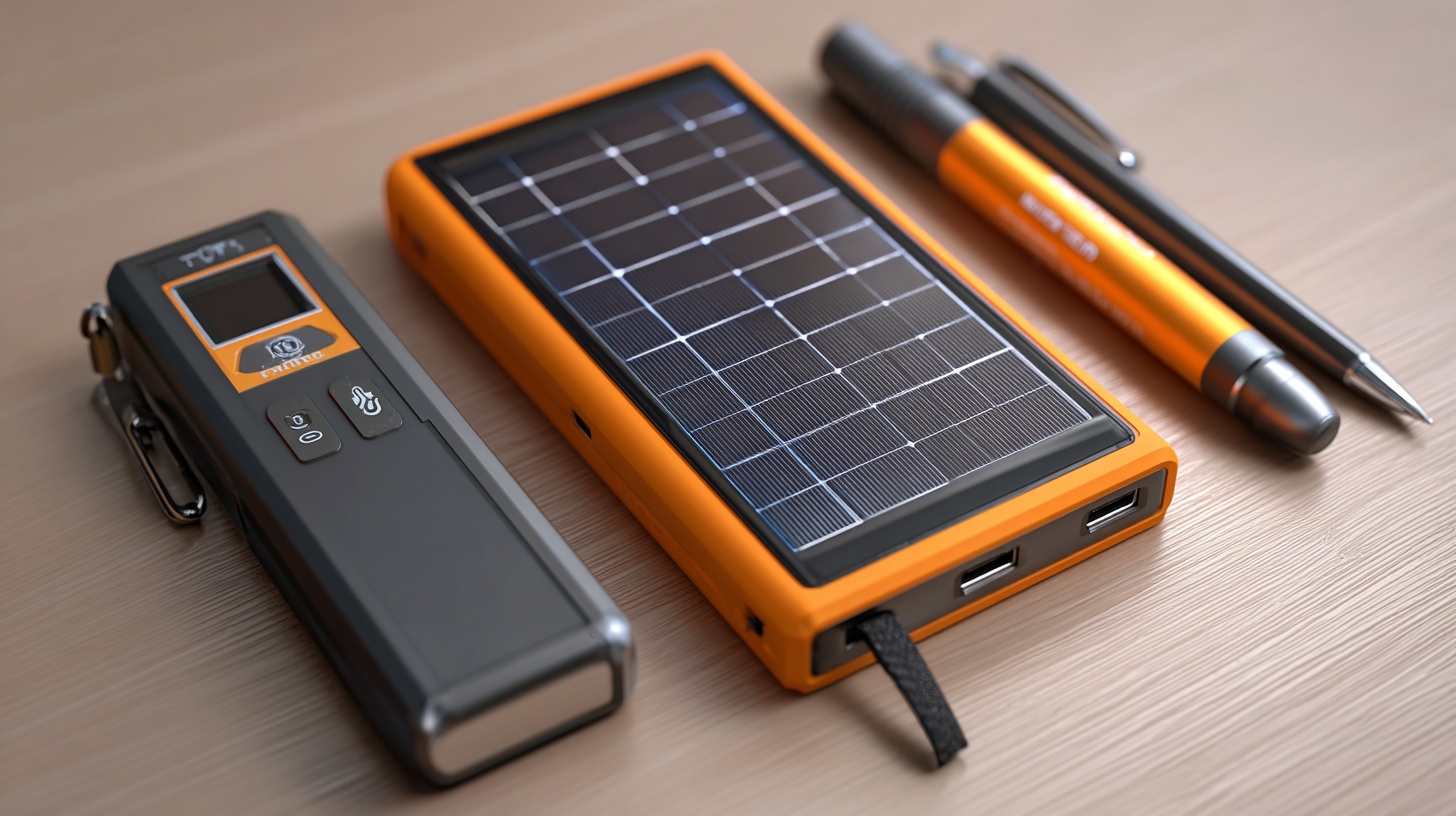
Ultimate Checklist for Choosing the Best Solar Power Bank for Your Business Needs
In recent years, the global market for portable energy solutions has witnessed remarkable growth, with the solar power bank segment emerging as a prominent player. According to a report by Allied Market Research, the solar power bank market is expected to reach $16.5 billion by 2027, growing at a compound annual growth rate (CAGR) of 25.2%. As businesses increasingly seek sustainable and efficient energy solutions, choosing the right solar power bank becomes crucial. These devices not only provide convenience in charging electronics on the go but also align with the growing demand for eco-friendly products.

As we explore the ultimate checklist for selecting the best solar power bank for your business needs, it is essential to consider factors such as efficiency, capacity, durability, and portability, ensuring that your investment meets both operational requirements and sustainability goals.
Key Features to Look for in a Reliable Solar Power Bank for Your Business
When selecting a solar power bank for your business, understanding key features is critical to ensure reliability and efficiency. One essential aspect is the solar charging capability. According to a report by Grand View Research, the global solar power bank market is expected to grow at a CAGR of 22.5% from 2021 to 2028. This surge indicates that businesses are increasingly recognizing the importance of sustainable energy solutions. Look for solar power banks with high-efficiency solar panels and good sunlight conversion rates to maximize your investment.
Another vital feature to consider is the power capacity. A solar power bank with a capacity of 20,000mAh or more is ideal for businesses with high energy demands, enabling you to charge multiple devices without running out of power. As per Statista, 90% of small businesses rely on mobile devices for operations, making capacity a crucial factor. Always check the discharge rate, ensuring it aligns with your business’s charging needs.
**Tip:** Opt for power banks equipped with multiple output ports; this allows you to charge several devices simultaneously, which is a significant advantage during outdoor events or traveling.
**Tip:** Consider the durability of the solar power bank. A rugged design with water and dust resistance adds longevity, particularly for businesses that operate in diverse environments.
Ultimate Checklist for Choosing the Best Solar Power Bank for Your Business Needs
Understanding Different Battery Capacities and Their Impact on Performance
When selecting a solar power bank for your business, one of the most critical factors to consider is battery capacity. Battery capacity, measured in milliamp hours (mAh), directly affects how much power can be stored and subsequently utilized. For businesses that rely on devices such as smartphones, tablets, or other electronics for daily operations, understanding this capacity is vital. A higher mAh rating generally means a longer usage time before needing to recharge the power bank itself, which can be a game-changer during outdoor events or during power outages.
Different battery capacities serve different business needs. For instance, a power bank with a capacity of 10,000 mAh can easily charge a smartphone multiple times, making it suitable for teams on the go. However, if your business requires the simultaneous charging of multiple devices or handling larger electronics like laptops, a capacity of 20,000 mAh or more would be more appropriate. Additionally, it's essential to consider the solar charging efficiency; a larger capacity bank may take longer to recharge under sunlight, which can impact your business's productivity and reliability on solar power alone. Understanding your specific requirements in terms of device usage and capacity will ensure you select the right solar power bank for optimal performance.
Evaluating Durability and Portability for Your Solar Power Bank Needs
When selecting a solar power bank for your business, evaluating both durability and portability is essential. A solar power bank often accompanies outdoor activities, events, or travels, making it imperative that it withstands various environmental conditions. Look for models constructed from rugged materials that resist impacts, water, and dust. This durability ensures that your investment can handle the rigors of travel and unpredictable weather, providing reliable power when you need it most.
On the other hand, portability is a critical factor in the practicality of a solar power bank. A lightweight design that easily fits into bags or pockets is vital for professionals on the go. Consider the size and weight of the power bank, as well as its charging capacity. Ideally, a good solar power bank should have a compact design that doesn't compromise on performance. Features such as foldable solar panels can enhance portability while maximizing solar absorption, allowing you to recharge effectively during outdoor excursions without added bulk.
Comparing Charging Speeds and Efficiency in Solar Power Banks
When selecting a solar power bank for your business, understanding the nuances of charging speeds and efficiency is crucial. Not all solar power banks are created equal; their performance can vary significantly based on solar panel quality, battery capacity, and the technology utilized. For instance, banks equipped with high-efficiency solar panels can convert more sunlight into electrical energy, allowing quicker recharging times in sunny conditions. Businesses that rely on outdoor events or remote locations should prioritize models that boast rapid charge capabilities to minimize downtime.

Furthermore, it's essential to consider the battery's output when comparing different solar power banks. A power bank with higher output (measured in watts) can charge devices faster, which is particularly beneficial for companies with multiple devices or those that require quick recharges. Look for features like dual USB ports and compatibility with various devices, ensuring you can power up laptops, smartphones, or other essentials simultaneously. In making your choice, consider both charging speed and efficiency as vital components in supporting your business's energy needs effectively.
Assessing Price vs. Value: Finding the Best Solar Power Bank for Your Budget
 When selecting a solar power bank for your business, it’s crucial to weigh price against value. A low-cost option might seem appealing at first glance, but it’s essential to consider the long-term benefits and performance it offers. Features such as capacity, charging speed, and durability can significantly impact the overall value of the product. While you might save money upfront, a cheaper solar power bank could lead to disappointment if it fails to meet your power needs or doesn't hold up under various conditions.
When selecting a solar power bank for your business, it’s crucial to weigh price against value. A low-cost option might seem appealing at first glance, but it’s essential to consider the long-term benefits and performance it offers. Features such as capacity, charging speed, and durability can significantly impact the overall value of the product. While you might save money upfront, a cheaper solar power bank could lead to disappointment if it fails to meet your power needs or doesn't hold up under various conditions.
Investing in a more expensive solar power bank can be a wise business decision if it provides reliable performance and longevity. Look for products that are built with high-quality materials and offer additional features like multiple charging ports or integrated LED lights. These added functionalities enhance the utility of the power bank and can ultimately save costs by avoiding the need for replacements or repairs. Balancing your budget with the essential features will ensure you choose a solar power bank that not only meets your current needs but also gives you the best value for your investment in the long run.
